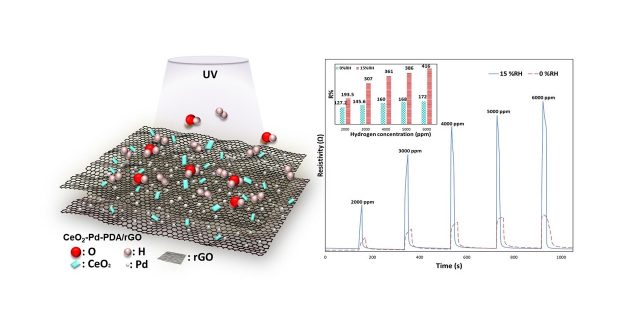
A two-dimensional (2D) CeO2/Pd/Graphene-Oxide heterojunction nanocomposite has been synthesised via an environmentally friendly and facile wet chemical procedure for hydrogen H2 gas sensing application
WRHI News
Published
(School of Materials and Chemical Technology / Dr. Saulius Juodkazis)
“Ultra-Sensitive Photo-Induced Hydrogen Gas Sensor Based on Two-Dimensional CeO2-Pd-PDA/rGO Heterojunction Nanocomposite”
Nanomaterials (DOI:10.3390/nano12101628)
For details, click here.
<Abstract>
A two-dimensional (2D) CeO2-Pd-PDA/rGO heterojunction nanocomposite has been synthesised via an environmentally friendly, energy efficient, and facile wet chemical procedure and examined for hydrogen (H2) gas sensing application for the first time. The H2 gas sensing performance of the developed conductometric sensor has been extensively investigated under different operational conditions, including working temperature up to 200 °C, UV illumination, H2 concentrations from 50–6000 ppm, and relative humidity up to 30% RH. The developed ceria-based nanocomposite sensor was functional at a relatively low working temperature (100 °C), and its sensing properties were improved under UV illumination (365 nm). The sensor’s response towards 6000 ppm H2 was drastically enhanced in a humid environment (15% RH), from 172% to 416%. Under optimised conditions, this highly sensitive and selective H2 sensor enabled the detection of H2 molecules down to 50 ppm experimentally. The sensing enhancement mechanisms of the developed sensor were explained in detail. The available 4f electrons and oxygen vacancies on the ceria surface make it a promising material for H2 sensing applications. Moreover, based on the material characterisation results, highly reactive oxidant species on the sensor surface formed the electron–hole pairs, facilitated oxygen mobility, and enhanced the H2 sensing performance.
